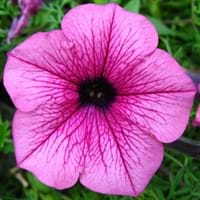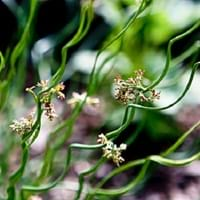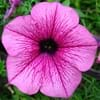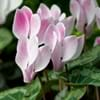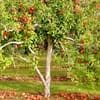Life Span
Annual
Perennial
Type
Flowering Plants, Shrubs
Sedge or Rush
Origin
South America
World/Pandemic, North America, Europe, Russia/Siberia, Africa, Asia
Types
Grandiflora Petunias, Multiflora Petunias, Wave Petunias, Superbell Petunias, Supertunia Petunias
not available
Number of Varieties
Not Available
Habitat
Terrestrial
All sorts of environments, Banks, ditches, marshes, Shores of rivers or lakes
USDA Hardiness Zone
9-10
6-9
AHS Heat Zone
Not Available
9-6
Sunset Zone
not provided
H1, 1a, 1b, 2a, 2b, 3a, 3b, 4, 5, 6, 7, 8, 9, 10, 11, 12, 13, 14, 15, 16, 17, 18, 19, 20, 21, 22, 23, 24
Habit
Not Available
Clump-Forming
Flower Color
Blue, Pink, Purple, Red, White, Yellow
Brown
Flower Color Modifier
Not Available
Bicolor
Fruit Color
Not Available
Non Fruiting Plant
Leaf Color in Spring
Golden Green
Green
Leaf Color in Summer
Green
Green
Leaf Color in Fall
Green
Green
Leaf Color in Winter
Green
Green, Tan, Sandy Brown
Leaf Shape
Ovate
Long hair-like leaves
Plant Season
Summer
Spring, Summer, Fall, Winter
Sunlight
Full Sun, Partial shade
Full Sun, Partial Sun
Type of Soil
Loamy, Sandy
Clay, Loam, Sand
The pH of Soil
Neutral
Acidic, Neutral
Soil Drainage
Well drained
Poorly Drained
Bloom Time
Fall, Spring, Summer
Early Summer, Summer, Late Summer, Early Fall
Tolerances
Pollution
Drought
Where to Plant?
Container, Ground, Pot
Ground, Pot
How to Plant?
Seedlings, Transplanting
Divison, reseeds
Plant Maintenance
Medium
Medium
Watering Requirements
Keep the ground moist but not water-logged, Requires regular watering, Requires watering in the growing season
Does not require regular watering
In Summer
Lots of watering
Lots of watering
In Spring
Moderate
Moderate
In Winter
Average Water
Average Water
Soil pH
Neutral
Acidic, Neutral
Soil Type
Loamy, Sandy
Clay, Loam, Sand
Soil Drainage Capacity
Well drained
Poorly Drained
Sun Exposure
Full Sun, Partial shade
Full Sun, Partial Sun
Pruning
Cut or pinch the stems, Do not prune during shooting season, Remove dead or diseased plant parts, Remove deadheads
Prune to control growth, Remove damaged leaves, Remove dead branches, Remove dead leaves
Fertilizers
All-Purpose Liquid Fertilizer
All-Purpose Liquid Fertilizer
Pests and Diseases
Aphids, Bacterial Blight, Caterpillars, Gray mold, Leaf spot, Powdery mildew, Root rot, Spider mites, Thripes, Verticillium Wilt, Viruses
Free of serious pests and diseases
Plant Tolerance
Drought
Drought
Flowers
Yes
Insignificant
Flower Petal Number
Not Available
Single
Fragrant Bark/Stem
Yes
No
Foliage Texture
Medium
Fine
Foliage Sheen
Matte
Glossy
Attracts
Butterflies, Hummingbirds
Bumblebees, Flying insects
Allergy
Not Available
Unknown
Aesthetic Uses
Beautification, Bouquets, Showy Purposes
Informal Hedge, Woodland margins
Beauty Benefits
Not Available
Not Available
Environmental Uses
Air purification
Air purification
Medicinal Uses
Not Available
No Medicinal Use
Part of Plant Used
Flowers
Not Available
Other Uses
Showy Purposes
woven into the covering of tatami mats
Used As Indoor Plant
Yes
No
Used As Outdoor Plant
Yes
Yes
Garden Design
Bedding Plant, Container, Edging
Bog Garden, Container, Mixed Border, Water Gardens
Botanical Name
Petunia
JUNCUS effusus f.Spiral
Common Name
Petunia
Curly wurly
In Hindi
Petunia
Corkscrew Rush
In German
Petunie
Corkscrew Rush
In French
Pétunia
Corkscrew Rush
In Spanish
Petunia
Corkscrew Rush
In Greek
πετούνια
Corkscrew Rush
In Portuguese
Petúnia
Corkscrew Rush
In Polish
Petunia
Corkscrew Rush
In Latin
Petunia
Corkscrew Rush
Phylum
Streptophyta
Magnoliophyta
Class
Magnoliopsida
Liliopsida
Family
Solanaceae
Juncaceae
Clade
Angiosperms, Asterids, Eudicots
Angiosperms, Commelinids, Monocots
Tribe
Not Available
Not Available
Subfamily
Petunioideae
Not Available
Number of Species
Not Available
Importance of Petunia and Corkscrew Rush
Want to have the most appropriate plant for your garden? You might want to know the importance of Petunia and Corkscrew Rush. Basically, these two plants vary in many aspects. Compare Petunia and Corkscrew Rush as they differ in many characteristics such as their life, care, benefits, facts, etc. Every gardener must at least have the slightest clue about the plants he wants to plant in his garden. Compare their benefits, which differ in many ways like facts and uses. The medicinal use of Petunia is Not Available whereas of Corkscrew Rush is No Medicinal Use. Petunia has beauty benefits as follows: Not Available while Corkscrew Rush has beauty benefits as follows: Not Available.
Compare Facts of Petunia vs Corkscrew Rush
How to choose the best garden plant for your garden depending upon its facts? Here garden plant comparison will help you to solve this query. Compare the facts of Petunia vs Corkscrew Rush and know which one to choose. As garden plants have benefits and other uses, allergy is also a major drawback of plants for some people. Allergic reactions of Petunia are Not Available whereas of Corkscrew Rush have Unknown respectively. Having a fruit bearing plant in your garden can be a plus point of your garden. Petunia has no showy fruits and Corkscrew Rush has no showy fruits. Also Petunia is flowering and Corkscrew Rush is not flowering . You can compare Petunia and Corkscrew Rush facts and facts of other plants too.
